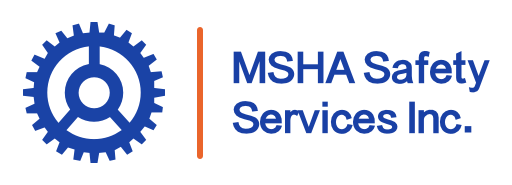Mining is a high-risk, high-reward industry that constantly adapts to new technologies, stricter regulations, and the growing demands of sustainability. To stay ahead, continuous training is essential for maintaining a skilled, efficient, and safe workforce—ensuring both worker well-being and long-term success. This article delves into why continuous training is indispensable for mining operations, exploring how it benefits individual workers, the company, and the industry as a whole.
Benefits of Continuous Training
Safety & Reduced Accident Rates
Safety is a fundamental aspect of the mining industry. Regular, ongoing training educates miners on essential safety protocols, hazard recognition, and emergency response techniques. This leads to reduced accident rates and enhances overall safety on-site.
Regulatory Compliance
The mining industry is heavily regulated, with standards that frequently evolve to ensure the protection of workers and the environment. Continuous training helps employees stay updated with new regulations, ensuring compliance and avoiding costly fines or shutdowns.
Technological Advancements
With rapid advancements in mining equipment and technologies, ongoing training enables workers to adapt to and master new tools and processes. By embracing technological advancements, companies boost operational efficiency and safety.
Skill Development
Continuous training programs allow employees to acquire new skills, which helps in skill development across various areas. This makes workers more versatile and capable, which can significantly impact productivity.
Increased Operational Efficiency
Trained employees are more efficient, as they make fewer errors and complete tasks more effectively. This increases productivity and reduces downtime, which can directly impact the mine operation’s profitability.
Building a Skilled Workforce
A commitment to continuous training builds a knowledgeable, skilled workforce. This not only benefits the individual miners receiving the training but also fortifies the mine against an aging workforce. As aging miners prepare to leave the workforce they take with them all their knowledge. This is one reason mine operators may consider increasing training with their newest hires.
Enhancing Operational Efficiency through Continuous Training
How Training Improves Productivity
When miners are trained in the latest techniques and best practices, they become more productive. Continuous training programs develop essential skills, empowering workers to operate equipment effectively and complete tasks faster.
Reducing Downtime and Equipment Failures
Proper training on equipment operation and maintenance reduces wear and tear, extending equipment life and preventing unexpected breakdowns. By reducing downtime, companies can maintain steady productivity and minimize costly repairs.
The Critical Role of Continuous Training in Safety
Building a Safety Culture
A safety culture is a cornerstone of any successful mining operation. When safety training is continuous, it becomes ingrained in the daily practices of all employees, reducing accidents and improving response times in emergencies.
Reducing Accidents & Fatalities
Training is one of the most effective ways to reduce on-site accidents and fatalities. When workers are prepared for potential hazards and know how to respond, the risk of serious incidents decreases.
Compliance with Regulatory Standards and Training
Adapting to Changing Regulations
Regulations in mining are constantly evolving to enhance safety and reduce environmental impact. Continuous training keeps employees informed about regulatory updates and enables them to apply best practices effectively.
Avoiding Penalties and Legal Issues
Compliance with regulations through training helps mining companies avoid fines, legal issues, and potential shutdowns. Staying compliant also improves the company’s reputation with both regulatory bodies and the public.
Economic Benefits of Continuous Training in Mining
Return on Investment (ROI)
Training is a smart investment. When companies invest in training, they see a return in terms of fewer accidents, reduced downtime, and increased productivity, which directly benefits the bottom line. Not to mention the amount of money saved on fines from MSHA.
Cost Savings from Fewer Accidents, Increased Productivity
Continuous training reduces accidents, saving the company money on potential medical costs, compensation claims, and equipment repairs. Additionally, trained employees work more efficiently, further enhancing productivity.
Continuous Training for New vs. Experienced Employees
Tailoring Programs for Different Experience Levels
A successful training program considers the varying experience levels of employees. New hires need extensive foundational training, while seasoned employees benefit from refreshers or advanced courses in specific areas.
See MSHA Safety Services course list to find all available trainings.
Benefits for Onboarding and Skill Upkeep
For new employees, MSHA safety training aids in onboarding, while for experienced workers, it ensures that they stay updated with the latest industry practices and advancements, maintaining a high level of competence.
Challenges in Implementing Effective Training Programs
Overcoming Time & Resource Constraints
Effective training requires time and resources, which can be challenging to allocate in an industry where continuous operations are often required. However, the long-term benefits of safety, efficiency, and compliance make the investment worthwhile.
Addressing Resistance to Change
Some employees may be resistant to ongoing training, especially if they are comfortable with existing practices. Clear communication about the benefits of training and involving employees in the process can help overcome this resistance. MSHA safety trainings require mandatory participation so seeking to find high-quality, engaging safety trainings can make attendance much easier for experienced teams.
Measuring the Effectiveness of Continuous Training
Metrics for Success
To assess the impact of training, companies can track metrics such as reduced accident rates, productivity improvements, and compliance levels. These indicators show whether the training program is achieving its goals.

Employee Feedback & Performance Indicators
Employee feedback and performance indicators provide valuable insights into the effectiveness of training. Not all trainers are created equal, so consider hiring a 3rd party safety training groups like MSHA Safety Services to keep classes engaging and meaningful. Professional trainers can make all the difference.
Long-Term Impact of Continuous Training on Mining Success
Continuous training is essential in mining, providing benefits that go beyond compliance. A well-trained workforce leads to safer, more efficient, and environmentally responsible operations, driving long-term success in the industry. Investing in continuous training is a proactive step that prepares your mine operation for future challenges while supporting team member’s growth and well-being.

